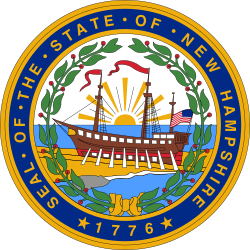| |||||||||||||||||
| |||||||||||||||||
 County results Cheney: 50–60% Marcy: 50–60% | |||||||||||||||||
| |||||||||||||||||
| Elections in New Hampshire |
|---|
 |
The 1876 New Hampshire gubernatorial election was held on March 14, 1876, in order to elect the governor of New Hampshire. Incumbent Republican governor Person Colby Cheney won re-election against Democratic nominee and former member of the U.S. House of Representatives from New Hampshire's 1st district Daniel Marcy and Temperance nominee Asa S. Kendall. [1]

